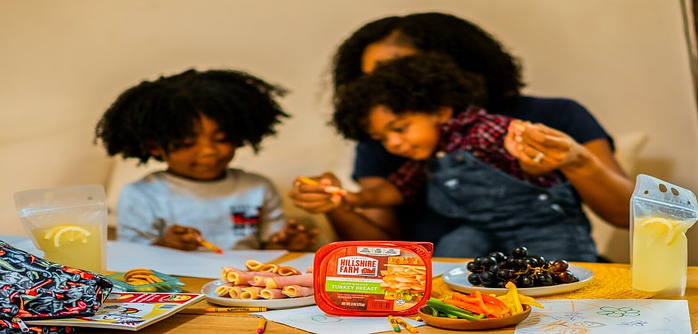
In the world abundant with food choices, guiding children toward a healthy and balanced diet stands as a crucial responsibility for parents. Making proper eating habits during childhood not only contributes to overall well-being but also establishes the groundwork for a lifetime of good health. In this article, we will explore the essence of healthy eating for children, examining the fundamental principles that underpin their growth, development, and long-term health.
Picture this: A spirited, imaginative child named Dany , with a penchant for storytelling and a love for all things colourful. One day, Dany comes across a vibrant array of fruits and vegetables in the kitchen and wonders aloud, “What if we turned these into a magical rainbow feast?” It’s moments like these that spark curiosity and open the door to introducing healthy eating in a way that’s both playful and meaningful.
Ever pondered how such imaginative encounters with food could shape a child’s perception of nutrition? What if we could turn the process of learning about healthy eating into an exciting adventure for every Dany out there? Let’s start making healthy food choices a delightful journey for children, one filled with creativity, discovery, and perhaps a touch of magic.
Variety is Key:
Healthy eating for children revolves around the provision of a diverse range of foods. A well-balanced diet should incorporate fruits, vegetables, grains, proteins, and dairy products. Each food group contributes essential nutrients supporting various aspects of a child’s development, from bone health to cognitive function.
Portion Control and Moderation:
Understanding portion sizes is crucial in fostering healthy eating habits in children. Teaching them to listen to their body’s hunger and fullness cues helps prevent overeating and promotes a healthy relationship with food.
Limit Sugary and Processed Foods:
While it’s natural for children to have a sweet tooth, limiting the intake of sugary and processed foods is imperative. These items often lack essential nutrients and can contribute to various health issues, including obesity and dental problems.
Encourage Hydration:
Water is a fundamental component of a healthy diet. Encouraging children to drink an adequate amount of water throughout the day supports their overall well-being, aids digestion, and helps maintain proper hydration levels.

Family Meals and Positive Eating Environment:
The importance of family meals cannot be overstated. Eating together fosters a sense of connection and provides an opportunity to model healthy eating behaviours. Creating a positive eating environment involves minimizing distractions, such as screens, and promoting mindful eating.
Teach the Importance of Breakfast:
Breakfast is often referred to as the most important meal of the day, and for good reason. A nutritious breakfast fuels a child’s body and mind, enhancing concentration and energy levels throughout the day.
Educate About Food Sources:
Teaching children about where their food comes from and the importance of choosing whole, unprocessed foods infuse a sense of appreciation for nutrition. Understanding the journey from farm to table can be an engaging and educational experience.
Be a Role Model:
Children learn by example, and parents play a pivotal role in shaping their eating habits. Being a positive role model by embracing a healthy lifestyle yourself can significantly influence your child’s choices.
Fun part
In my belief, involving kids in food-related activities can be both enjoyable and instrumental in helping them grasp the significance of healthy eating. These engaging experiences not only make learning about nutritious choices more fun but also contribute to a deeper understanding of the importance of maintaining a healthy diet.
1. Veggie Art Creations:
Encourage children to create edible art using a variety of colourful vegetables. Provide a selection of veggies, such as bell peppers, cherry tomatoes, cucumbers, and carrots, along with hummus or yogurt as a canvas. Let them design their own veggie masterpieces, making the process of eating vegetables a fun and creative experience.
2. Healthy Food Bingo:
Create a Bingo game with pictures of different healthy foods instead of numbers. Children can mark off the foods they eat throughout the day. To add an extra element of fun, consider including a small reward or a special activity for those who complete their “Healthy Food Bingo” card.
3. Rainbow Plate Challenge:
Challenge children to create a rainbow on their plate by incorporating fruits and vegetables of different colours. Assign a point system for each colour, and let them track their progress over the week. This game not only makes eating a variety of produce exciting but also teaches the importance of a balanced diet.
4. Mystery Food Tasting:
Turn mealtime into an adventure by introducing a “Mystery Food Tasting” game. Cover various healthy foods with a cloth or place them in opaque containers, and let children guess what they are based on taste, smell, and texture. This game encourages exploration of new foods and helps develop an appreciation for different flavours.

5. Garden-to-Table Scavenger Hunt:
If possible, involve children in growing a small garden or take them to a local farmers’ market. Create a “Garden-to-Table Scavenger Hunt” where they can find and collect different fruits and vegetables. After the hunt, involve them in preparing a meal using their fresh finds. This activity not only promotes healthy eating but also connects children to the source of their food.
6. Cooking Challenge:
Organize a cooking challenge where children can get involved in preparing simple, healthy meals or snacks. Provide a variety of ingredients and let them experiment with creating their own recipes. This hands-on approach not only enhances their culinary skills but also instils a sense of pride and accomplishment in making nutritious choices.
These games aim to make the concept of healthy eating more engaging and enjoyable for children, fostering positive attitudes toward nutritious foods
Conclusion
In conclusion, fostering healthy eating habits in children can be a rewarding journey filled with fun and interactive activities. By incorporating creative games and initiatives into their daily routines, parents can make the concept of nutritious choices exciting for their little ones. I invite parents to embark on this adventure with their kids, trying out the suggested games or coming up with their own. Share your experiences in the comment section below – let’s create a community of parents exchanging ideas and insights on how to make healthy eating an enjoyable and shared family experience. Together, we can inspire and support each other in nurturing a generation of kids who not only understand the importance of healthy eating but also find joy in making nutritious food choices.
Cheers!
Ela


Teaching children to eat healthily is getting harder and harder, especially with the availability of fast and junk foods getting easier and easier, and healthier foods are just getting pricier.
I love the fun section you have added to this article, as we all know that children love fun. The bingo game is my favorite here and I am definitely going to try that. I am lucky that my teen loves her veggies, but unfortunately, she also loves her sugar and her junk food. So it is a constant battle to find a happy medium. I think I must try the cooking challenge with her.
Wow, just stumbled upon this page, and I must say, it’s like finding a hidden treasure in the vast internet jungle! As a parent who’s been trying to decode the mystery of ‘healthy eating for kids’ (a.k.a. trying to convince my little one that broccoli is not an alien food), this article is a lifesaver. The tips are practical and easy to follow – who knew that making food fun could actually make my kiddo want to eat it? And here I was, thinking that my attempts at broccoli spaceships were just for my own amusement. Thanks for sharing this goldmine of information. It’s nice to find a place that doesn’t just say ‘feed them veggies’ but actually shows how to do it without a food fight!